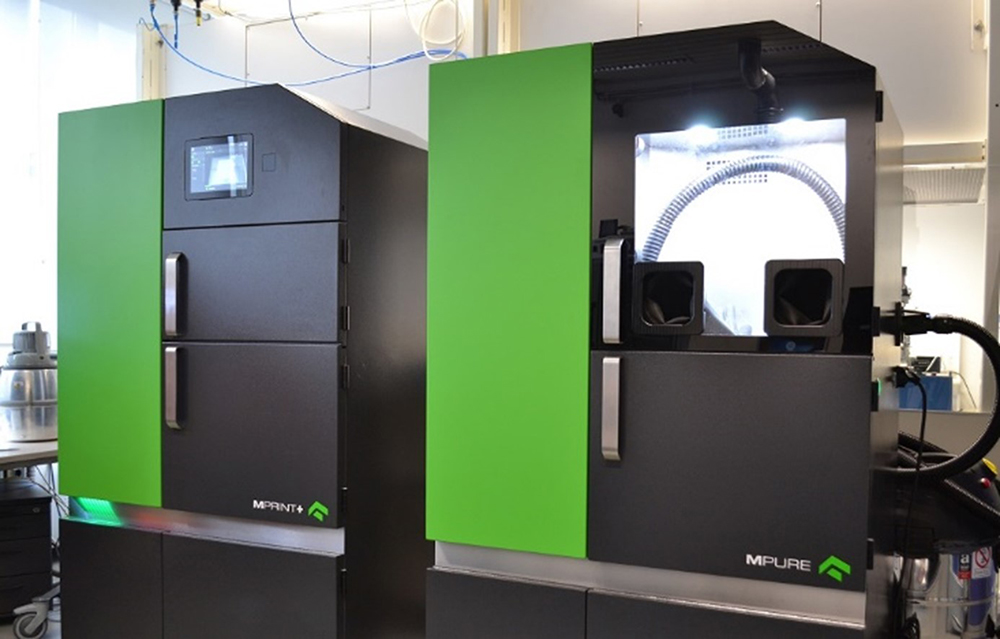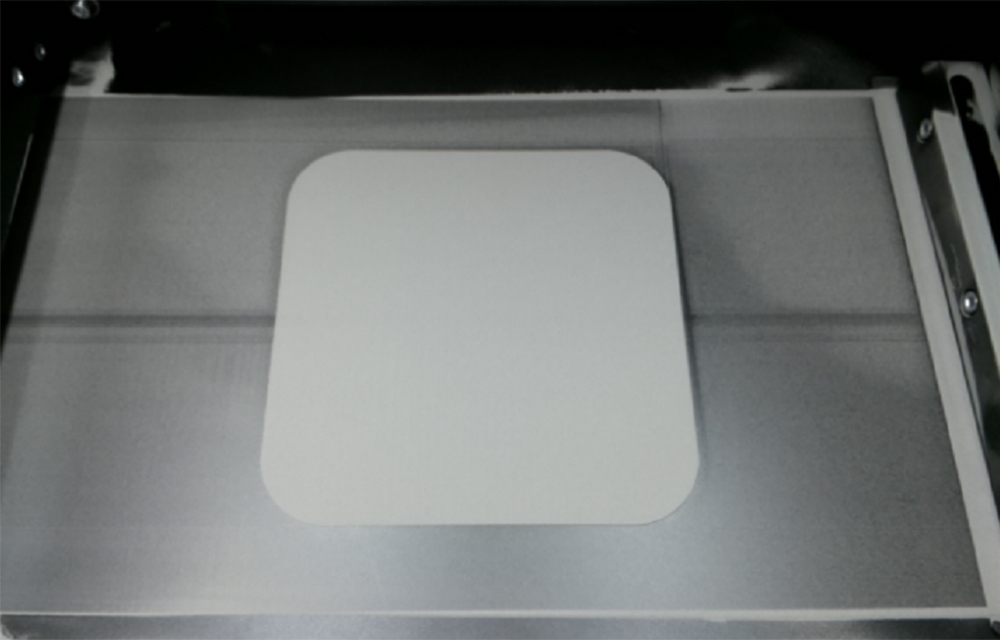The IMPT’s new 3D printer uses the so-called Laser Powder Bed Fusion (LPBF) process. In this process, a thin layer of metal powder is deposited on a platform and melted locally with a laser. The platform then moves minimally lower and the process is repeated. In this way, the desired component is created layer by layer.
Resolution in the micrometer range
Since tiny metal particles are a great health hazard, the MPRINT+ 3D printer uses cartridges so that contact with the powder is minimized. The powder is deposited at a layer height of 20 to 80 µm and melted with a 200 W laser with a focus diameter of 45 µm. The so-called unpacking process, i.e. the removal of the excess powder from the component, takes place in another, completely enclosed system.
Reuse of the powder
Powder that was not melted is collected and sieved. This allows for a complete reuse in the next print job, creating a sustainable powder cycle. The new 3D printer expands the IMPT’s equipment portfolio. Several plastic 3D printers are already in use there. The metal 3D printer will be used for a wide range of applications in the future. The focus will be on vacuum components or complete chambers with individualized connections.
Advantages of metal 3D printing
3D printing allows the production of complicated and weight-reduced geometries that are not feasible with conventional manufacturing processes – for example, the integration of cooling channels in thermally stressed components or tools. Metal 3D printing offers another advantage over conventional plastic printing: because metal is more thermally and mechanically resilient, the printed components can withstand extreme pressures and temperatures. This takes the quality of prototyping at IMPT to a new level.

